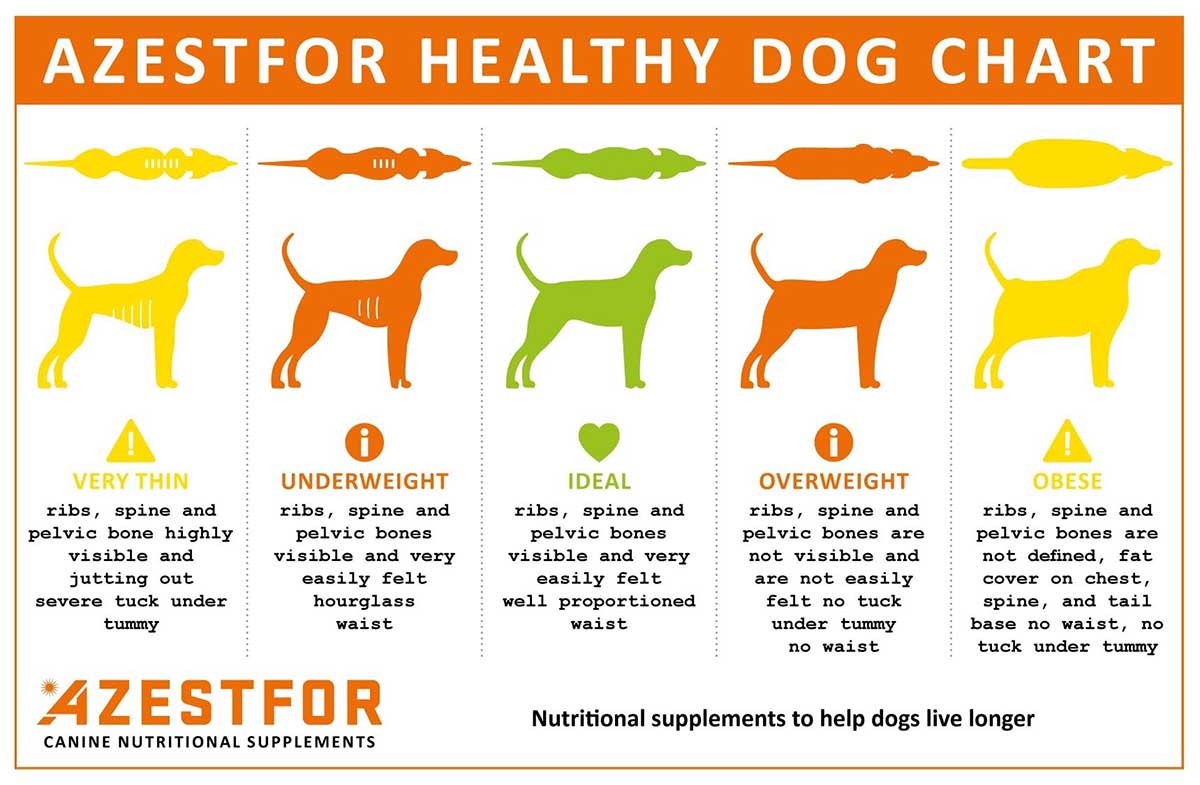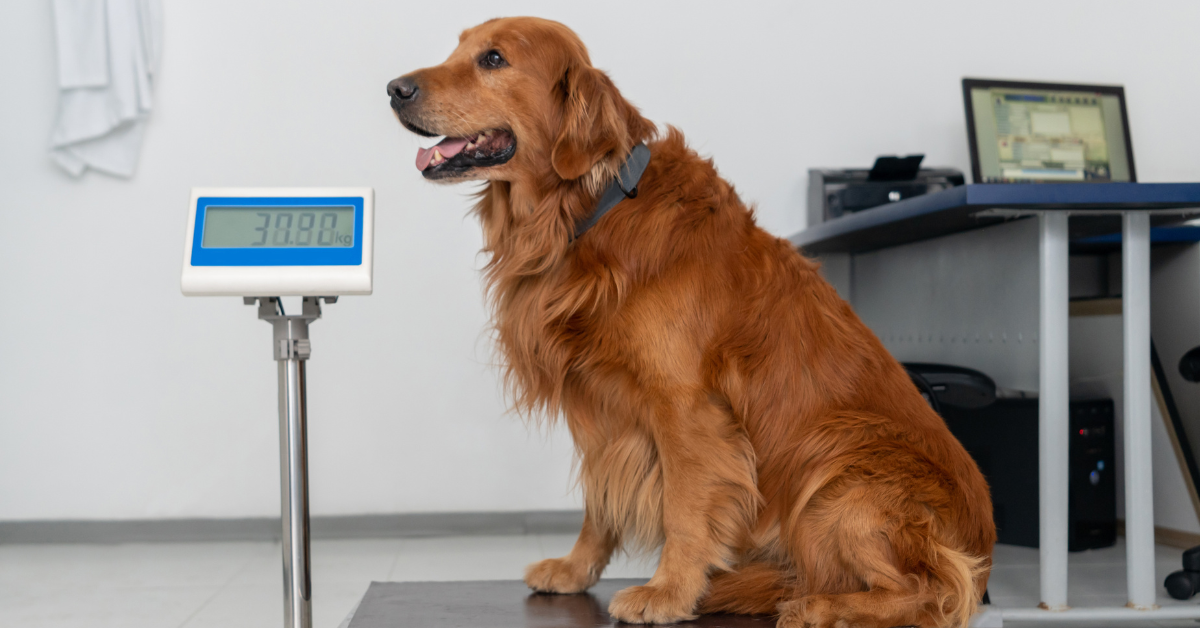Recognizing, understanding and managing diet concerns in our pets By Joanne Fernandez-Lopez, DVM
How do I know the ideal weight for my pet?
Which type of food will offer a well-balanced nutrition for the current life stage needs? Where do I start? Well, you are right. There is no one-size-fits-all type of approach when it comes to nutrition. There are many factors to consider which I will discuss briefly in this article. For example, the energy requirements of a puppy or kitten will vary tremendously compared to a 5-year-old adult dog or cat.
With some exceptions, the feeding frequency in dogs and cats that are less than 1 year of age tends to be 3 times a day while in adults is twice a day.
Yet, depending on medical conditions, if the pet is pregnant, currently lactating or is in need to lose weight, factors to consider are the type of diet, nutrient content (%), ingredients, caloric content, feeding frequency, amount of cups per feeding and other variables which will be tailored differently compared to the recommendation in the back label of the standard commercial diets.
Body Weight Chart For Dogs

One of the most common concerns of pet owners and veterinarians is obesity. In recent years, companion animal obesity (over-nutrition) has become as much of a problem as under-nutrition (1). For this reason, a systematic method of assessment for an animal's overall condition performed by a veterinarian is necessary.
First, a full nutritional history is discussed with your veterinarian. Some questions we might ask are so we get a broad picture of the pet's previous medical conditions, current medications, appetite, athletic performance, amount fed per day, snacks or other foods given, current commercial food brand, and environmental factors or stressors that could trigger over-eating or under-eating (eg. food competition with other pets at home) (2).
Please, see an example of a nutritional evaluation form from AAHA (American Animal Hospital Association) for possible questions your veterinarian might ask during the consult (4).
Following the questions, a full physical examination is performed to identify dental disease (a frequent problem seen in underweight pets), musculoskeletal problems (joint disease and possible pain which can diminish activity or cause muscle atrophy), skin problems, which are common in endocrine or hormone-related diseases (eg. hypothyroidism) and others.
Yes, this is a long process. We do not want to miss anything.
There could be pre-existing medical conditions that can cause secondary weight gain or weight loss in animals. But not to worry, your veterinary general practitioner may recommend full bloodwork to verify and rule out any diseases at the moment.
After we identify and solve any secondary problems, we begin a basic nutritional assessment. Body Condition Scoring (BCS) provides an estimate of adequate nutritional intake and help us establish a healthy ideal weight.
Dogs and cats should be weighed and a BCS of 1-5 or 1-9 scale is assigned. In a scale of 1 to 5, a score of 1 means pet is emaciated; 2 means pet is thin; 3 is moderate; 4 is stout and 5 is obese.
Our goal is to have pets on a BCS of around 3. This measuring method, together with Muscle Condition Scoring (MCS), is implemented since weight alone does not help us fully evaluate your pet. For example, a dog's normal weight can be in a range from 2 lb to 180 lbs depending on the breed.
See 2010 AAHA Nutritional Assessment Guidelines in this articles references for images and descriptions of each score in the BCS and MCS metrics.
Now, for a full well balanced diet, all of the following components should be included and measured following each pet's nutritional requirements.
These are water, energy (known as ME with units of calories or joules), protein, fats, carbohydrates, crude fiber, vitamins, and minerals (macronutrients and trace minerals).
The AAFCO (Association of American Feed Control Officials) has published the minimum nutrient requirements for both dogs and cats during growth, reproduction and adult stages (5). Then again, these are minimums, not maximums and the percent of each component should be measured according to your pet's current needs and goals.
The AAFCO establishes the nutritional standards for complete and balanced pet foods, and it is the pet food company's responsibility to formulate their products according to the appropriate AAFCO standard. It is always encouraged for you to verify the AAFCO requirements with your current diet brand or homemade recipe diet.
Which type of food will offer a well-balanced nutrition for the current life stage needs?
Your veterinary practitioner and you can evaluate homemade diets following the recommendations from the Table 1: Quick Assessment of Homemade Diet Recipe (6). Print a copy of this assessment, found in the referenced article (6) and bring it with you to the veterinary consult.
Following this quick assessment guideline, the homemade recipes that are adequate for weight loss are supposed to be higher in fiber (which is seen in brown rice, sweet potatoes and/or oatmeal) and lower in fat content.
The best Azestfor homemade recipes for weight loss are
Chicken & Potato, Venison & Rice and Turkey.
If you are looking for weight gain, the best homemade diets are
Duck with Chickpeas and Carrots,
Bison with Peas and carrots or
Rabbit with Chickpeas and Carrots.
Once the ideal weight is reached, work with your veterinarian to continue monitoring the weight and slowly switch the diet to a well balanced healthy pet diet.
Diet transitions should be slow (mixing 25% of new diet with 75% of old diet) and approximately for 1 week to prevent any vomiting or diarrhea from the food change.

Compared to commercial diets, improving the balance in homemade recipes is not a simple task and on occasion beyond the skill set of most veterinary practitioners (6). Boarded veterinary nutritionists, like other veterinary specialists, have advanced training and can be of particular assistance with homemade therapeutic diets. Correcting imbalances are generally not difficult, time consuming, or expensive for nutritionists.So most recipes can be completed and balanced.
The veterinary nutritionist will take into consideration the history, physical examination, bloodwork and basic nutritional assessment performed by the veterinary practitioner to evaluate any current homemade diet.
If you are considering a consult with a veterinary nutritionist, please request referral information from your veterinary practitioner. Any questions or concerns you have, please feel free to ask to your general veterinary practitioner or veterinary nutritionist.
If your pet has any other pre-existing health conditions, please ask your veterinarian prior starting any homemade diet.
Our main goal is to keep your pet healthy.
REFERENCES(1) Kahn, C. M., & Line, S. (9th Ed.). (2005). The Merck/Merial Manual For Pet Health. In Chapter: Nutrition: Small Animals. Page 1914-1934. Simon and Schuster.
(2) Baldwin, K., Bartges, J., Buffington, T., Freeman, L. M., Grabow, M., Legred, J., & Ostwald Jr, D. (2010). AAHA nutritional assessment guidelines for dogs and cats. Journal of the American Animal Hospital Association, 46
(4), 285-296.
(3) Nguyen, P., Rama, B., Takashima, G., Tsjimoto, H., & van Beukelen, P. Nutritional Assessment Guidelines. Retrieved on June 5, 2016 fromhttp://www.wsava.org/sites/default/files/WSAVA%20Global%20Nutritional%20Assessment%20Guidelines%202011%20final.pdf(4) Nguyen, P., Rama, B., Takashima, G., Tsjimoto, H., & van Beukelen, P. Nutriotional Evaluation Form. Retrieved on June 5, 2016 fromhttps://www.aaha.org/public_documents/professional/guidelines/nutritionevaluationform.pdf(5) Dzanis DA 1994 (2014 Revision). The Association of American Feed Control Officials dog and cat food nutrient profiles: substantiation of nutritional adequacy of complete and balanced pet foods in the United States. Journal of nutrition, 124
(12), 2535S. Updated version retrieved on June 5, 2016 from http://www.aafco.org/Portals/0/SiteContent/Regulatory/Committees/Pet-Food/Reports/Pet_Food_Report_2013_Midyear-Proposed_Revisions_to_AAFCO_Nutrient_Profiles.pdf(6) Remillard RL.
Homemade diets: Attributes, pitfalls and a call for action. Top Comp An Med. 2008; 23:137-142. ii) See page 140 for Table 1: Quick Assessment of Homemade Diet Recipe https://www.researchgate.net/publication/51429914_Homemade_Diets_Attributes_Pitfalls_and_a_Call_for_Action


